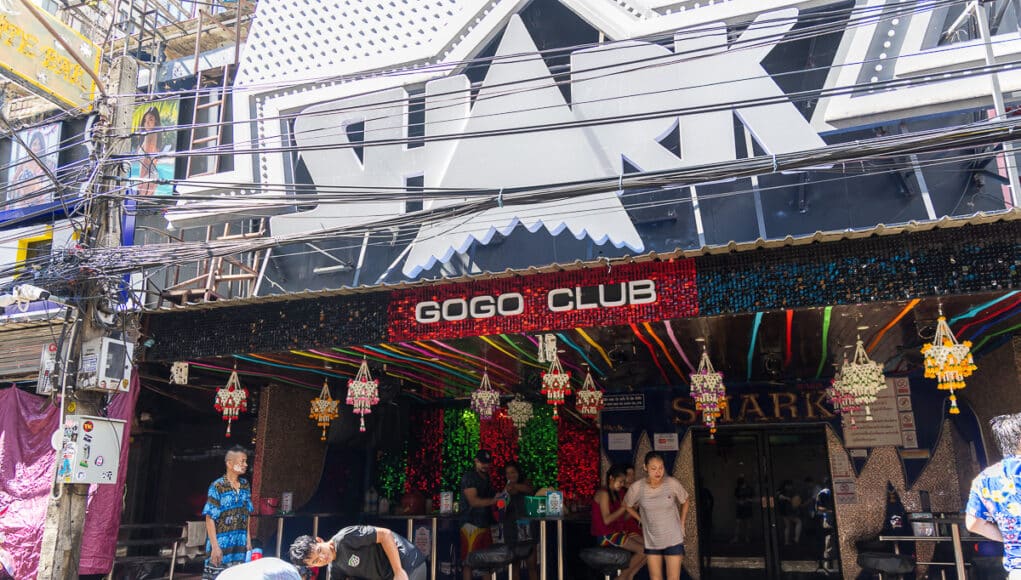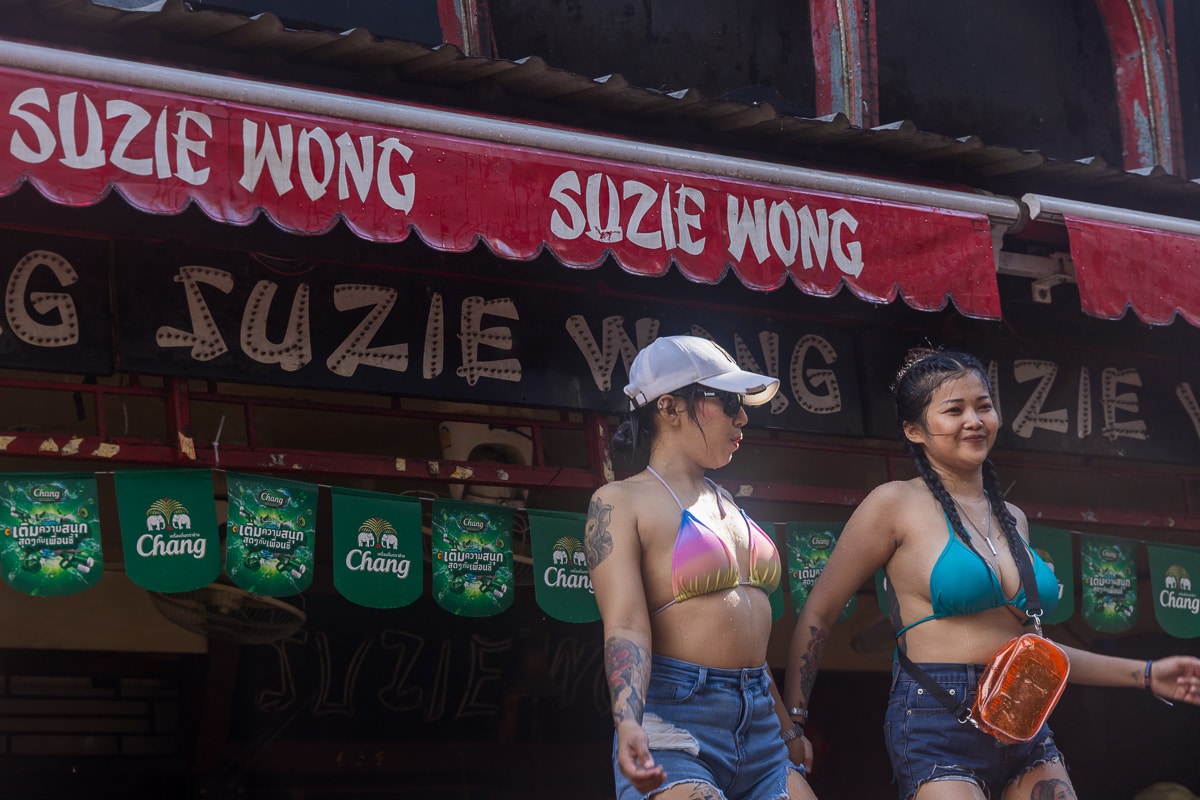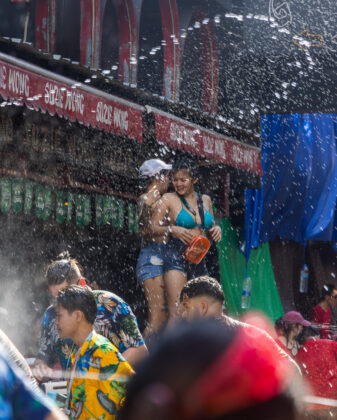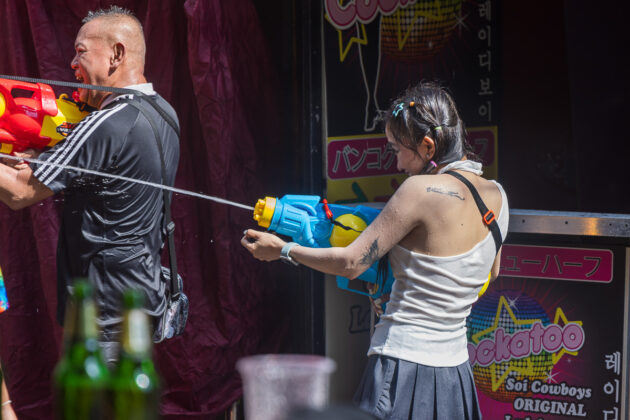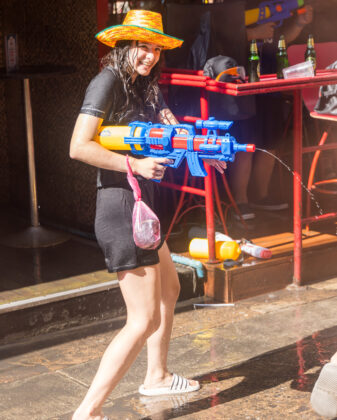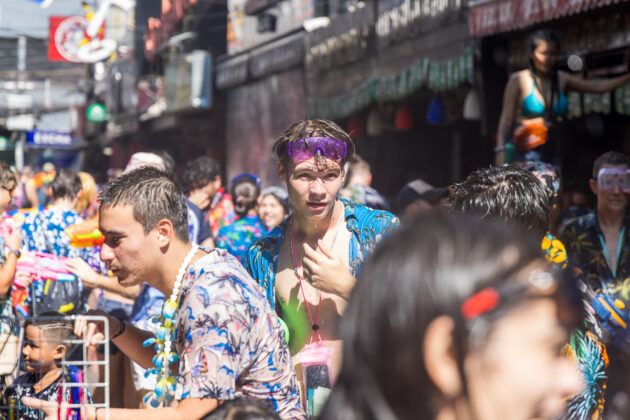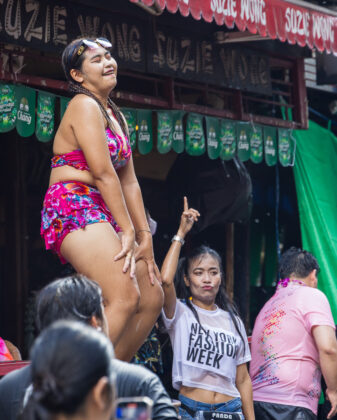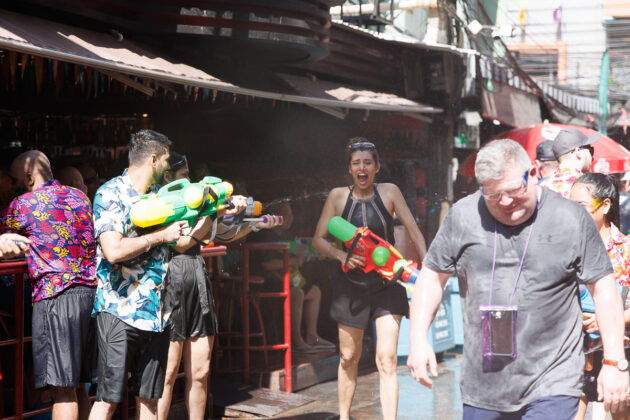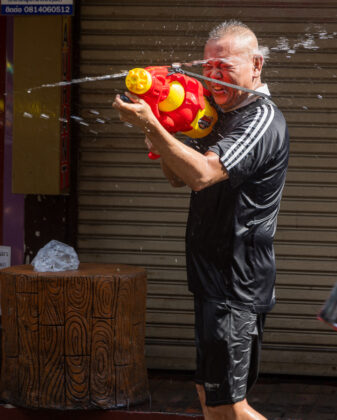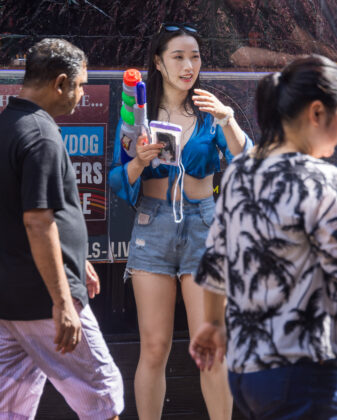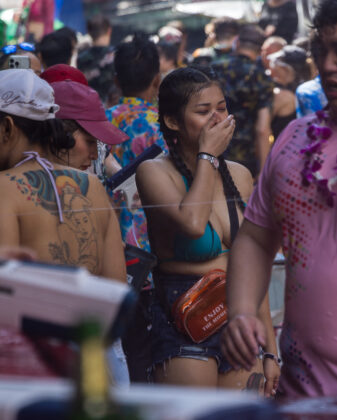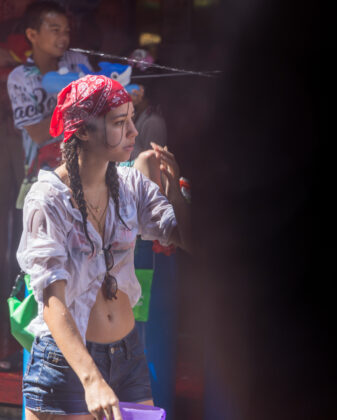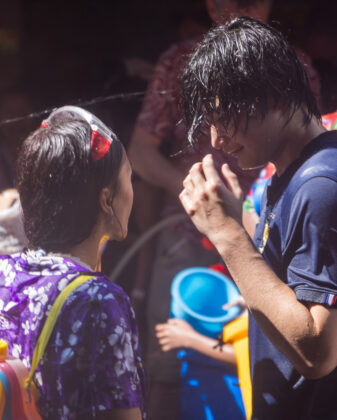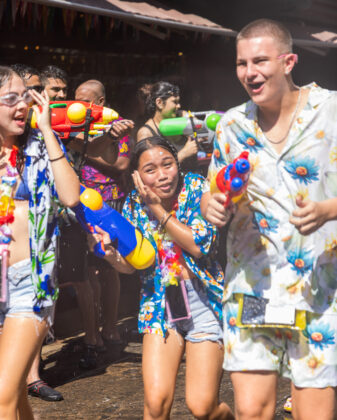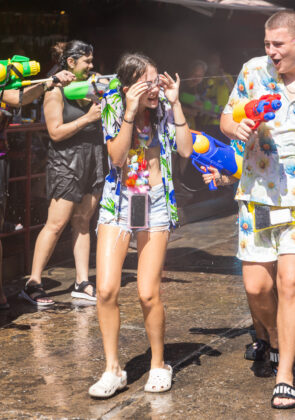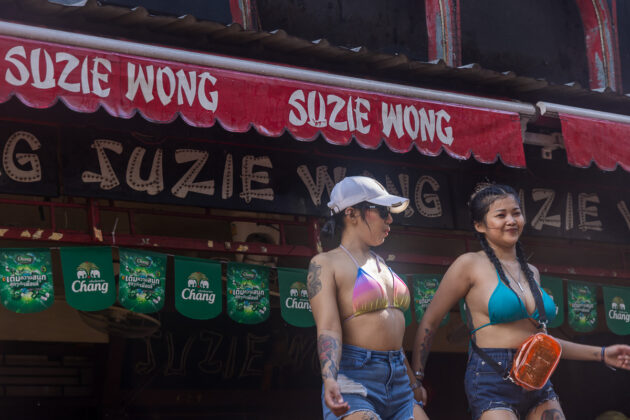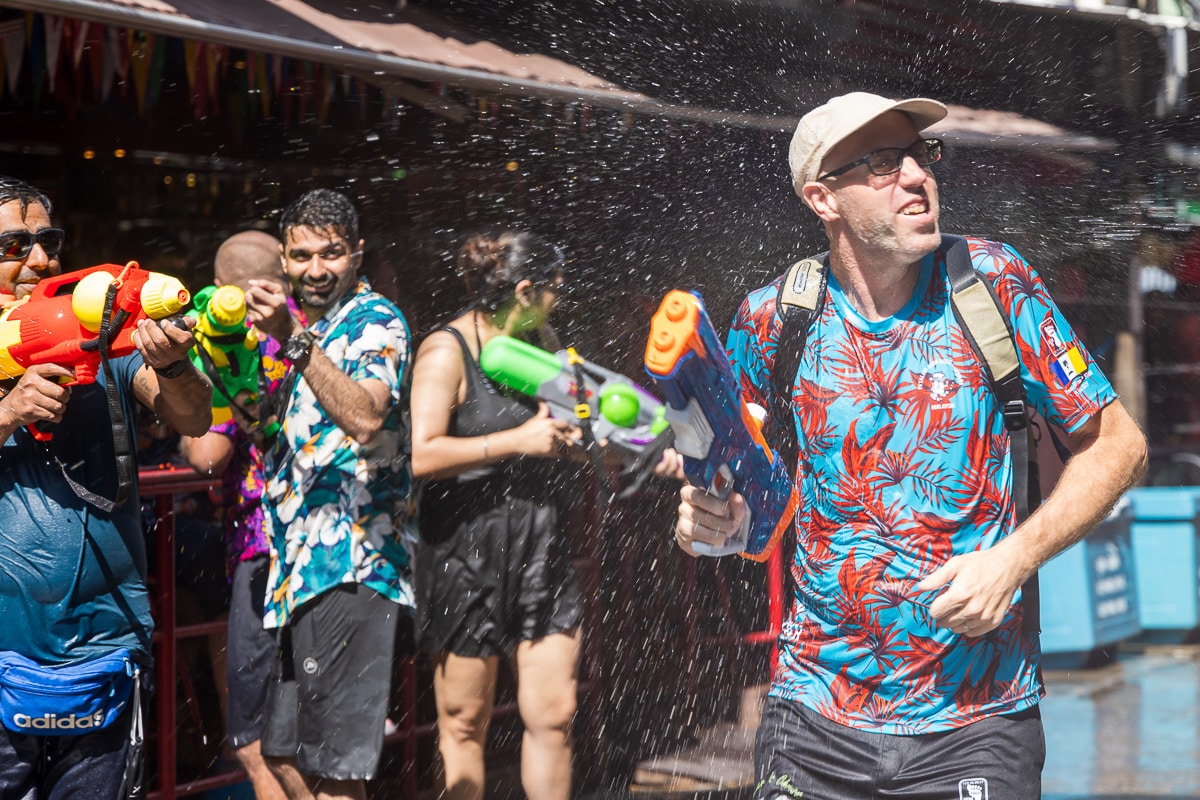Songkran on Soi Cowboy is a water-soaked battleground as Bangkok marked the Thai New Year with its signature mix of tradition and revelry.
Red-Light Districts Turn Blue
From April 13-15, Songkran on Soi Cowboy saw afternoon water fights, with bars such as Suzie Wong, Baccara, and Shark Go-Go Club opening their patios at 2 p.m.
Festivities continued until 7 p.m., after which indoor venues resumed regular operations. Shark Go-Go Club led the celebrations with a four-night “H₂O” themed party series, featuring events like the “Full Moon H₂O Fever Show” and the “Aqua Girl Show,” blending traditional Thai New Year customs with the area’s nightlife culture.
Nearby Songkran on Soi Cowboy, Nana Plaza also participated, though water activities were limited due to structural constraints.
Clubs such as Red Dragon and Mandarin Club hosted similar “H₂O” themed parties, while Lollipop operated from noon to 6 p.m., allowing patrons to engage in water festivities before evening entertainment commenced.
Citywide Celebrations and Safety Measures
Beyond the red-light districts, Bangkok’s major thoroughfares became epicenters of Songkran celebrations. Silom Road and Khao San Road attracted over 110,000 revelers on April 12, with participants engaging in water fights from noon until late evening. The Bangkok Metropolitan Administration implemented safety protocols, including increased law enforcement presence and AI-driven CCTV surveillance, to manage crowds and ensure public order.
Despite the festive atmosphere, safety remained a concern. Authorities emphasized the importance of public transportation and adherence to safety guidelines during the holiday period.
Cultural Significance Amid Festivities
While Songkran on Soi Cowboy is renowned for its water fights, the festival holds deep cultural and spiritual significance.
Traditionally, it marks the Thai New Year and involves rituals such as “Rot Nam Dam Hua,” where younger individuals pour scented water over the hands of elders to seek blessings. Families also visit temples to make merit, offering food to monks and bathing Buddha statues as acts of purification.
Away from Songkran on Soi Cowboy, the Maha Songkran World Water Festival at Sanam Luang showcased Thailand’s cultural heritage with parades, traditional performances, and exhibitions representing the country’s diverse regions. The event aimed to highlight Thailand’s identity and promote cultural tourism.
Economic Impact of Songkran on Soi Cowboy
Songkran on Soi Cowboy provided a significant boost to Thailand’s tourism industry.
The government projected an 8% increase in foreign visitors during the festival week, contributing to an estimated 26.5 billion baht in revenue.
Tourists from various countries participated in the celebrations, drawn by the unique blend of cultural traditions and festive activities.


